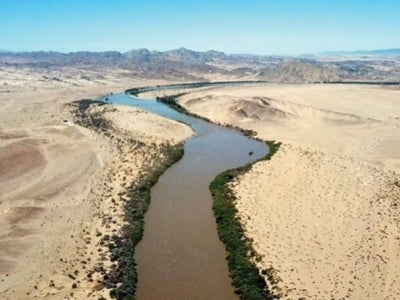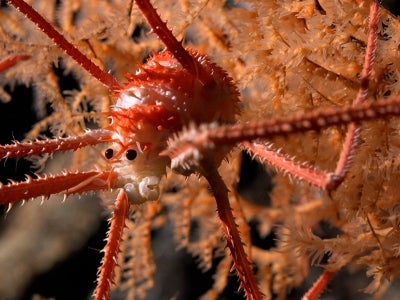
This story started in 1992, when UNDP invited me to lead a project team for a proposed GEF-financed project on marine pollution prevention in the seas of East Asia. This turned out to be the catalyst for a vibrant collaboration among governments, private institutions, researchers and citizens to safeguard the oceans and coasts of South East Asia.
Our work on the marine pollution pilot project quickly highlighted the enormous and complex issues facing governance of the East Asian Seas. This led us to recommend adoption of a programmatic approach, including longer-term management interventions covering all eligible countries bordering the East Asian Seas. Thus the first GEF-funded International Waters project of the region was born – this was PEMSEA, Partnerships for Environmental Management of the Seas of East Asia.
Building from one lesson and success to another, with long-term support from UNDP, PEMSEA has become one of the longest-running GEF International Waters programmes. I have been associated with it since its inception in 1993, and have had the privilege to be part of – and witness to – the steady and unique evolution of PEMSEA, and the significant changes that it continues to make at local, national, regional, and even international level.
The most significant contribution during the first phase of PEMSEA (1993-1999), was the development and demonstration of Integrated Coastal Management (ICM) as an effective tool for local governments to address complex coastal governance and management challenges. This was piloted at two sites in China and the Philippines. Over time, we developed technical capacity for ICM in various countries and built up a pool of local and regional experts for coastal and marine management. A new financing mechanism involving public and private sector partnerships in environmental management was also explored.
While PEMSEA began small, the outcomes it delivered were recognized as beneficial to both local and national governments in the region. This highlighted the need for the partnership to expand its geographical coverage and functional scope in succeeding years.
As we moved into the second phase of GEF funding, it was evident that the region needed a common vision and mission that would set a clear direction to achieve sustainable coastal and ocean development at a larger scale. Mutual exchange of knowledge and experience led to the formulation of the landmark Sustainable Development Strategy for the Seas of East Asia. Adopted as the roadmap for regional co-operation in 2003, the Strategy provided a framework of actions for achieving the goals of key international agreements and other instruments related to governance and management of coasts, islands and oceans. During the same period (2000-2007), implementation of integrated coastal management was extended to sites in six more countries.
The strength of PEMSEA lies in its partnerships and in 2003, the East Asian Seas Congress and Ministerial Forum were launched – they have convened every three years since. Country partnerships were formalised through the Haikou Agreement, signed by 11 countries in 2006. This established PEMSEA as the regional coordinating mechanism for the implementation of the Sustainable Development Strategy, and created the impetus for PEMSEA’s establishment as a self-sustaining entity.
In a particularly exciting development, 2006 saw the launch of the first East Asian Seas Youth Forum, to engage youth leaders across the region, and empower them to take ownership of the health of coasts and oceans. The Youth Network has collaborated closely with local governments in the development and implementation of integrated coastal management, providing opportunities for involvement of young people in projects aimed at enhancing public awareness, restoring habitats and building the overall resilience of coastal communities.
At the local and regional level, capacity development was advanced through training programmes, awarenessraising, the establishment of ICM Learning Centres at several universities, and Regional Centres of Excellence. These Centres work collectively to build capacity and provide scientific input to Integrated Coastal Management policies and programmes at the national and local levels. Strong support networks for local governments were also institutionalized, including the PEMSEA Network of Local Governments for Sustainable Coastal Development (PNLG) and the PEMSEA Network of Learning Centres (PNLC). These knowledge-sharing and advocacy networks have grown over time, serving as incubators for innovation and co-operation – for example, membership of the PNLG has grown from 10 local governments in 2001, to 45 today.
Other important milestones at this time were various codes and agreements, which were scaled-up during subsequent funding cycles. This included adoption of a voluntary code of practice for safety, health and environmental management at ports and harbours, and agreements at ministerial level for oil spill preparedness and response.
As PEMSEA shifted into the third cycle of support from the GEF and UNDP, the time came for me to retire, after completing 15 years of service with the Regional Programme. Although this was probably long overdue, I felt that I could leave with a great sense of satisfaction that PEMSEA was on the right path and in safe hands under its new leadership. But, full retirement was not on the cards for me. In 2008, I was elected to serve as Chair of the East Asian Seas Partnership Council, and so continued assisting PEMSEA’s transformation in this capacity, with the support of the members.
With the formation of the Council, a much bolder PEMSEA partnership came to the fore. It brought together country members and non-country partners – the latter being national, regional and international organizations and institutions in the region which share our vision. One of our key tasks was to transform PEMSEA into an international organization with a legal identity – this was a formidable task! But in 2009, eight participating countries formally recognized PEMSEA’s international legal personality and it became a fullyfledged international organization. Our priority was to prepare for national implementation of the Sustainable Development Strategy, and scaling-up of many of the partnerships, networks, mechanisms and practices that had been put in place in the earlier phases. The countries focused on formulating national coastal and ocean policies, legislation and implementing programs.
To further strengthen the capacity of local governments and to facilitate their efficient use of available resources, PEMSEA initiated the development of the Integrated Coastal Management Code. This was designed to help local governments in planning, developing, assessing and refining a structured management system for marine and coastal areas to enhance governance and achieve desired social, economic and environmental goals.
Immediately following the Rio+20 summit, the Ministerial Forum responded to the global call for stronger commitment towards achieving a sustainable future, and the Changwon Declaration Toward an Ocean-based Blue Economy was signed. Part of the Changwon commitment was the adoption of the 5-year Implementation Plan for the Sustainable Development Strategy for the Seas of East Asia.
PEMSEA entered into its fourth phase of GEF support in 2014, as an implementing partner of UNDP. This ushered in a new stage in PEMSEA’s evolution, with a new brand and services to better support the needs of partners and other stakeholders as they scaledup implementation of the Strategy.
The Partnership has indeed come a long way – the Secretariat that was initially run by two people working in a single room, has grown into a 36-strong team in a 2-storey building provided by the Government of the Philippines. Ten of the 12 partner countries have adopted and initiated the implementation of national policies, strategies, and programs for coastal and ocean management; and 75 percent of the countries have established national inter-agency and inter-sectoral coordination mechanisms. Approximately 15 percent of the region’s coastline is now covered by Integrated Coastal Management, from a baseline near zero in the early nineties, and several countries are starting to incorporate the objectives and targets of the Strategy into their medium-term development plans, and are promoting such investments to a wider group of development agencies, donors and local and national partners.
A deeper engagement with the youth sector – tomorrow’s leaders – has also been pursued. In 2016, a small grants program was established for furthering the cause for sustainable coastal management by youth in their respective communities and universities. And we are seeing exciting developments such as students developing educational games to promote awareness and leading mangrove rehabilitation and beach clean-up operations.
Existing learning networks are being expanded and new ones are being created to improve interaction between governments and the business community in the planning, development and implementation of blue economy policy and investments.
What lies behind these remarkable achievements? The introduction of ICM shifted mindsets from sitebased, compartmentalised and top-down approaches to holistic, integrative, and area-based coastal management led by local governments. The Sustainable Development Strategy has served as a useful regional framework, creating opportunities for collaboration and co-operation in a diverse and complex region. PEMSEA has gone to great lengths to build regional competency for integrated coastal management and ocean governance and this is key to its sustainability. The combination of science, precautionary approaches, intuitive knowledge and working experience has facilitated wise decisionmaking, and partnerships have been at the core of all of this.
The past 23 years have not been without hurdles. But, with strong support from the partners, PEMSEA has endured and remained focused on its vision. It has shown that creating significant change and promoting continuous growth require commitment and innovation to address the myriad issues in the East Asian Seas region. As a witness to PEMSEA’s evolution over the past two decades, I am confident that it will continue as a leading international organization that places great emphasis on local, national and regional implementation of sustainable coastal and ocean development strategies.”
DR CHUA THIA-ENG is Chair Emeritus of the East Asian Seas (EAS) Partnership Council. He served first as PEMSEA’s Regional Programme Director from 1993 to 2007, was elected as Chair of the EAS Partnership Council from 2008 to 2013, and has served as Chair Emeritus since then. With a PhD in Zoology, he has held academic positions at several universities including the University of Singapore, the University of the Philippines and the University of Science, Malaysia. He has also served on numerous international and UN organizations, managing regional programmes and projects.
Over the past 20 years, PEMSEA has directed substantial efforts in empowering local governments, coastal communities and national governments to protect and preserve East Asia’s oceans and coasts. Evolving from a demonstration project on marine pollution prevention and management, PEMSEA is now a fully-fledged international organization with a legal identity.
Working in partnership with local and national governments, international development organizations, companies, scientific institutions and regional initiatives, PEMSEA has applied Integrated Coastal Management (ICM) solutions in dozens of sites across East Asia, impacting more than 31,000 km of coastline and over 146 million people living in coastal and watershed areas. Healthier habitats and fisheries resources have improved the quality of life for coastal communities, and PEMSEA-supported governance processes have provided coverage to all socio-economic segments of society, including women, children, indigenous peoples and disadvantaged groups.
With the help of the Global Environment Facility (GEF), UNDP and other international organizations, PEMSEA has fostered a dynamic partnership among stakeholders from the local, national, sub-regional and regional levels working to address threats to the region’s marine and coastal ecosystems and the communities these support.
This story was originally published in "Voices of Impact: Speaking for the Global Commons" by UNDP in 2016.


